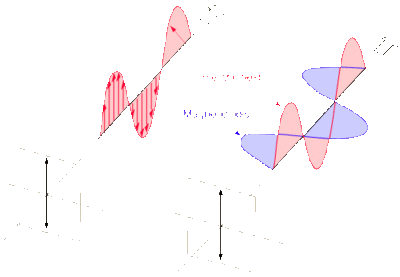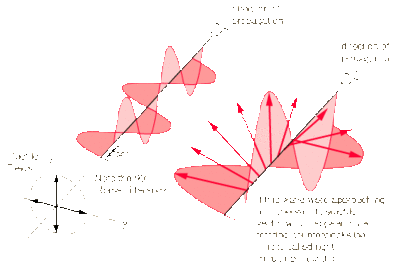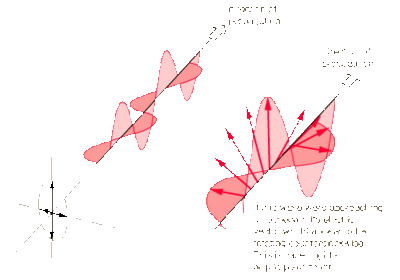Polarization of Waves: Difference between revisions
| Line 69: | Line 69: | ||
[https://www.youtube.com/watch?v=Q0qrU4nprB0 Animation] | [https://www.youtube.com/watch?v=Q0qrU4nprB0 Animation] | ||
[https://en.wikipedia.org/wiki/Linear_polarization Linear Polarization] | [https://en.wikipedia.org/wiki/Linear_polarization Linear Polarization] | ||
[https://en.wikipedia.org/wiki/Circular_polarization Circular Polarization] | [https://en.wikipedia.org/wiki/Circular_polarization Circular Polarization] | ||
[https://en.wikipedia.org/wiki/Elliptical_polarization Elliptical Polarization] | [https://en.wikipedia.org/wiki/Elliptical_polarization Elliptical Polarization] | ||
==References== | ==References== | ||
Revision as of 17:58, 5 December 2015
The Main Idea

There are three main types of wave polarization. A wave is polarized when two electromagnetic waves are traveling co-linearly and the electric field components are perpendicular to each other.
Linear Polarization

Most natural light is linearly polarized. The polarization shape is described by the electric field vector. In the case of a basic electromagnetic wave, as shown to the right, the electric field vector points up and down vertically as the wave travels.
Circular Polarization

Light which is polarized circularly consists of two perpendicular electromagnetic waves. In this case, show to the right, there are two electric fields which are perpendicular to each other (the illustration does not show the magnetic fields). These electric fields have equal amplitude but have a phase shift of 90 degrees. This creates an electric field vector which moves in a circle as the wave travels.
Elliptical Polarization

Elliptical polarization is very similar to circular polarization. In this case, shown to the right, the electric fields are still perpendicular and of the same amplitude. The difference is that the electric fields do not have equal amplitudes. Therefore the electric field vector creates an elliptical shape as the wave progresses - due to the changing magnitude and direction.
Mathematical Models
Linear Model
Circular Model
Elliptical Model
Examples
Be sure to show all steps in your solution and include diagrams whenever possible
Simple
Middling
Difficult
Connectedness
- How is this topic connected to something that you are interested in?
- How is it connected to your major?
- Is there an interesting industrial application?
History
Put this idea in historical context. Give the reader the Who, What, When, Where, and Why.
See also
Are there related topics or categories in this wiki resource for the curious reader to explore? How does this topic fit into that context?
Further reading
Transverse and Longitudinal Waves
External links
Animation Linear Polarization Circular Polarization Elliptical Polarization